Guides
When and How to Plant Garlic in Fall for Best Results
Have you ever wondered why some gardeners seem to grow the best garlic while others struggle to get their garlic to thrive? If you’re asking yourself when to plant garlic in fall and how to ensure a bountiful harvest, you’re in the right place. Garlic is one of the most rewarding crops to grow, but it requires careful timing and preparation, especially if you plan to plant it in the fall.
In this guide, we’ll walk you through everything you need to know about planting garlic in fall: from choosing the right garlic varieties, to the perfect planting time, to step-by-step instructions on how to grow this wonderful crop in your own garden. Whether you’re a seasoned gardener or a beginner, these tips will ensure you get the best results come harvest time.
Why Plant Garlic in Fall?
When most people think of gardening, they picture the spring and summer months. However, fall is actually the best time to plant garlic in many regions, especially in areas with cold winters. Why? Planting garlic in fall gives it the cold exposure it needs to develop strong bulbs. Cold temperatures trigger a natural process called vernalization, which is crucial for garlic growth.
By planting garlic in fall, you give the bulbs enough time to establish their roots before winter hits, ensuring a healthy and robust crop. When the weather warms up in the spring, your garlic will be ready to spring into action and grow into large, flavorful bulbs.
Ideal Planting Time for Garlic
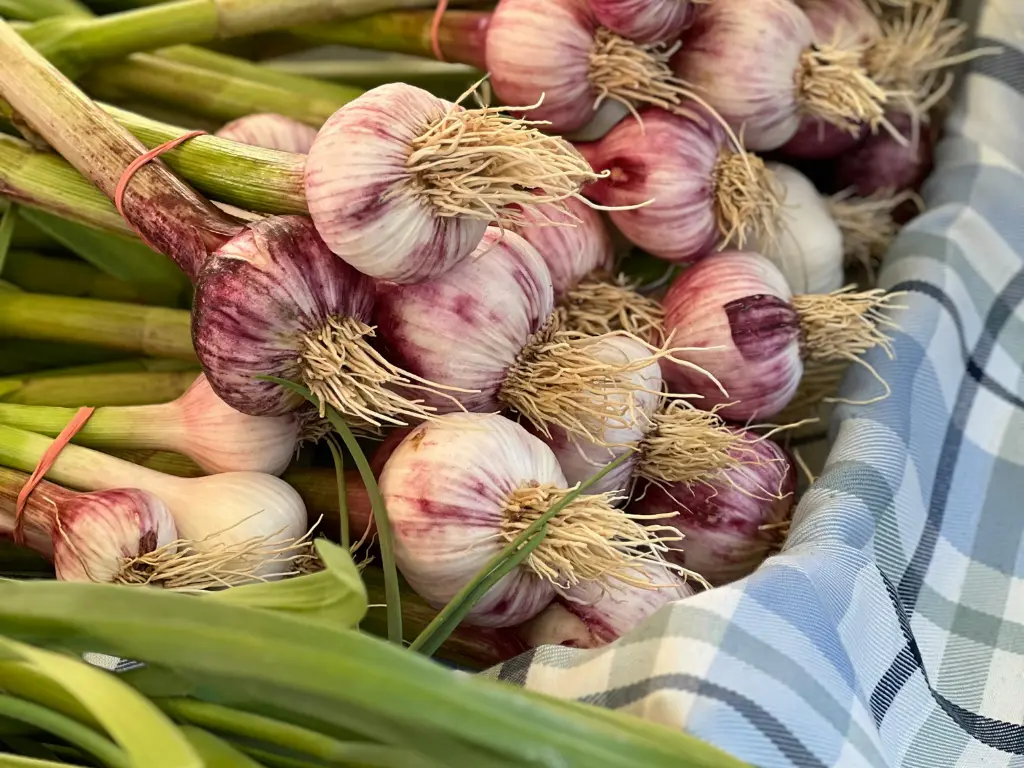
The best time to plant garlic in the fall varies depending on your location, but generally, you’ll want to plant garlic about 4-6 weeks before the first hard frost in your area. This allows the garlic enough time to establish roots before the ground freezes. For most regions, this means planting garlic anywhere from late September to early November.
One of the biggest mistakes beginner garlic growers make is planting too early in the fall. While garlic is cold-hardy, it requires cold temperatures to establish strong roots. If planted too soon, garlic may start growing too early, which can lead to problems when frost hits.
-
Small Bulbs: Planting too early can result in small garlic bulbs that are difficult to peel and less flavorful.
-
Early Shoots and Frost Damage: If garlic shoots appear too early, the frost will kill the shoots, leaving the garlic clove with insufficient energy for spring growth.
-
Clove Problems: In the worst case, the garlic clove may dry out (desiccate), rot, or become a target for rodents, reducing the overall harvest.
Factors Affecting Planting Time:
There are several factors to consider when determining the best time to plant garlic:
-
Climate Zone – Garlic grows best in cold climates with cold winters, but some varieties can thrive in milder climates as well.
-
Frost Dates – Plant your garlic when you’re about 4-6 weeks out from your first expected frost.
-
Soil Temperature – Garlic needs soil temperatures between 40°F and 60°F to establish healthy roots.
Garlic needs time to establish roots during the fall and then go dormant over winter. This cold-weather root growth allows the garlic to push up a sprout and form full bulbs in spring.
Planting garlic too early or in too warm a climate, such as in the southern or tropical regions, can prevent the cloves from developing properly and stunt growth. For the best results, ensure you plant garlic at the correct time to give it the cold exposure it needs.
You may like:
- 9 Health Benefits of Rue: How to Make Rue Tea & Its Side Effects
- Mexican Tarragon vs French Tarragon: Which Tarragon Is Best for Your Garden?
- How to Grow French Tarragon in Containers: A Complete Guide
- How to Grow French Tarragon: Your Comprehensive Guide
Choosing the Right Garlic Varieties
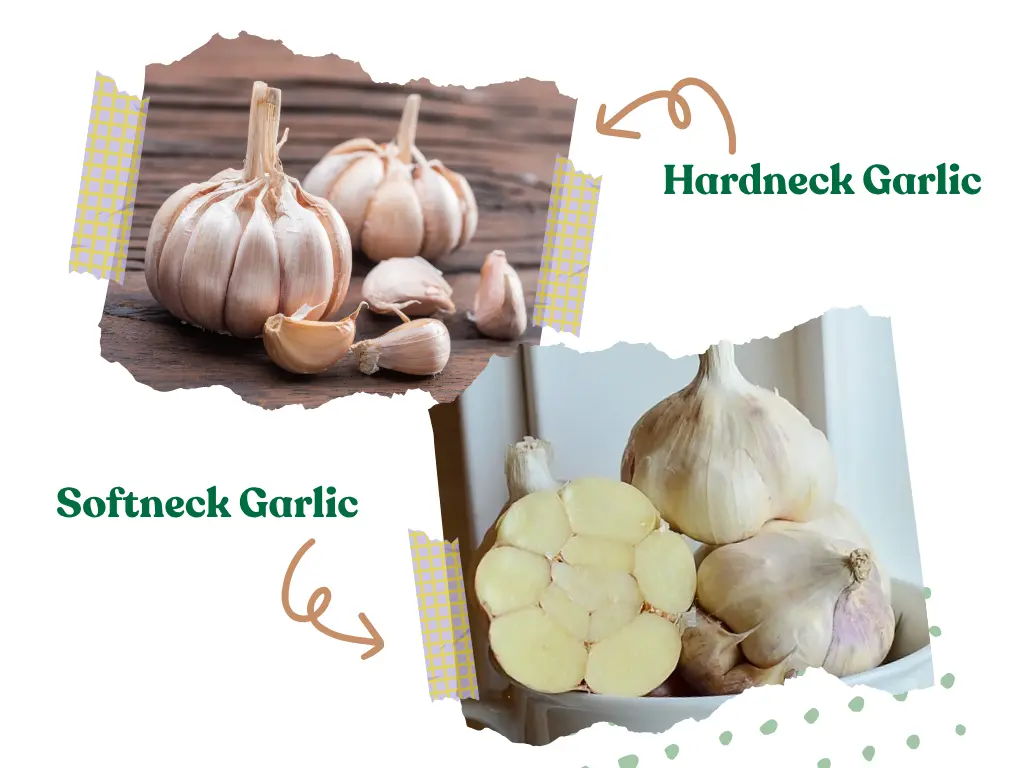
Now that you know when to plant garlic, the next step is choosing the right variety. There are two main types of garlic that gardeners grow: hardneck garlic and softneck garlic. Both are suitable for planting in the fall, but the choice between them depends on your climate and growing conditions.
-
Hardneck Garlic: This type is best for colder climates. It produces scapes (flower stalks) in the spring, which are edible and delicious in cooking. Hardneck garlic tends to have a stronger flavor and is easier to peel compared to softneck garlic.
-
Softneck Garlic: Softneck garlic is more commonly grown in warmer climates. It stores better and has a milder flavor. This variety is perfect if you’re growing garlic in milder winter zones or if you want garlic for long-term storage.
How to Plant Garlic in Fall
Once you’ve chosen the right garlic variety and determined the best planting time, it’s time to plant. Here’s a simple guide to help you plant garlic successfully:
1. Prepare the Soil
Garlic thrives in well-drained, fertile soil. Before planting, amend your soil with compost or well-rotted manure to ensure good fertility. Garlic prefers slightly acidic soil with a pH level between 6.0 and 7.0. You can test your soil’s pH and amend it if necessary.
2. Break Up Garlic Bulbs
Before planting, separate the garlic bulbs into individual cloves. Be sure to leave the papery skins on the cloves—this helps protect them during growth. You’ll want to plant the largest cloves for the best chance of producing big, healthy bulbs.
3. Plant Garlic Cloves
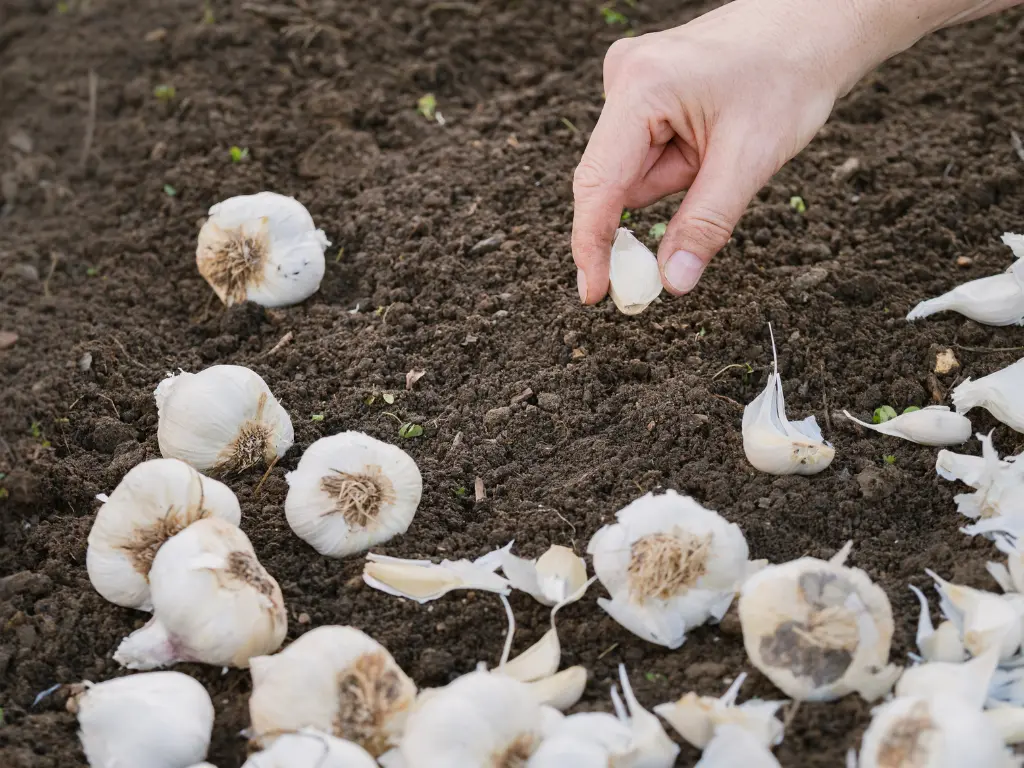
Plant garlic cloves about 2 inches deep, with the pointed side facing up. Space the cloves 4-6 inches apart in rows that are 10-12 inches apart. This spacing allows each plant enough room to grow.
4. Cover with Mulch
Once your garlic cloves are planted, cover the soil with a thick layer of mulch. Straw, leaves, or grass clippings work well for this purpose. Mulch helps to keep the soil temperature stable and prevents the ground from freezing too quickly. It also helps retain moisture and suppress weeds.
5. Watering and Care
Garlic doesn’t need a lot of water during the winter months, but you should ensure that the soil is moist before the ground freezes. Water your garlic well after planting, but avoid overwatering. Garlic doesn’t like soggy soil, so make sure the soil drains well.
Caring for Garlic in Fall and Winter
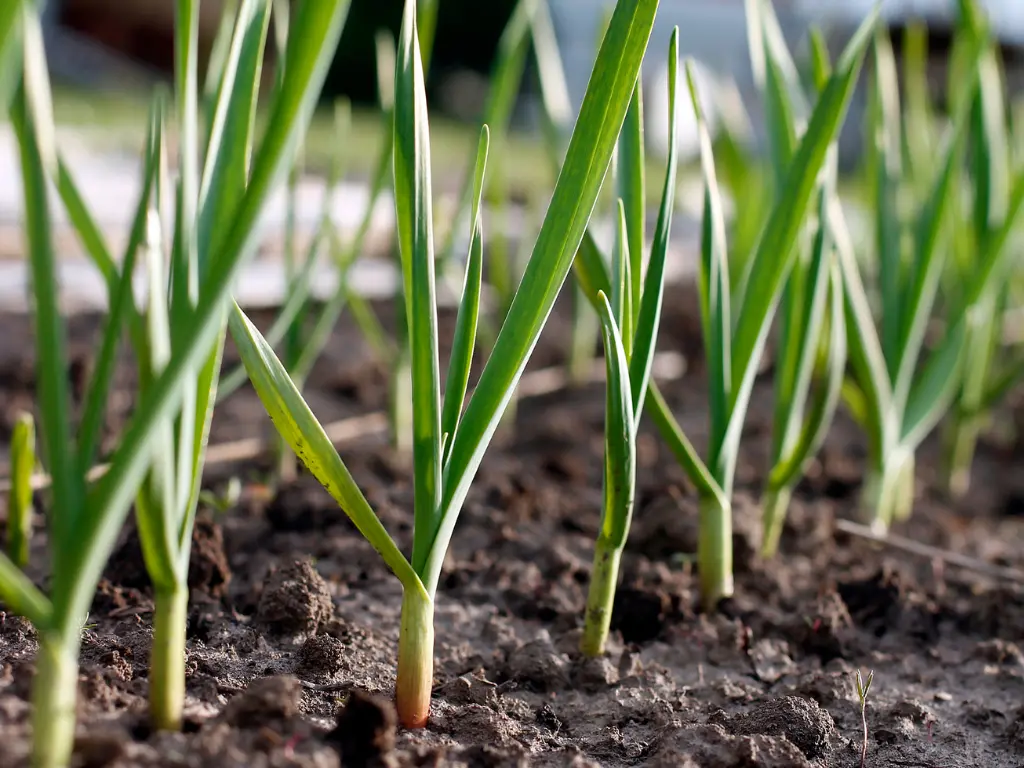
While garlic is a low-maintenance crop, it still needs some care during the colder months. After planting in the fall, you’ll want to check on your garlic occasionally throughout the winter:
-
Mulch Maintenance: Check the mulch periodically to ensure it stays in place and continues to insulate the soil.
-
Weeding: Garlic can struggle with weeds, especially in the early stages of growth. Be sure to keep your garlic bed weed-free.
-
Protecting from Extreme Cold: In areas with extremely cold winters, you might want to add a thicker layer of mulch or use row covers to protect your garlic.
When to Harvest Garlic
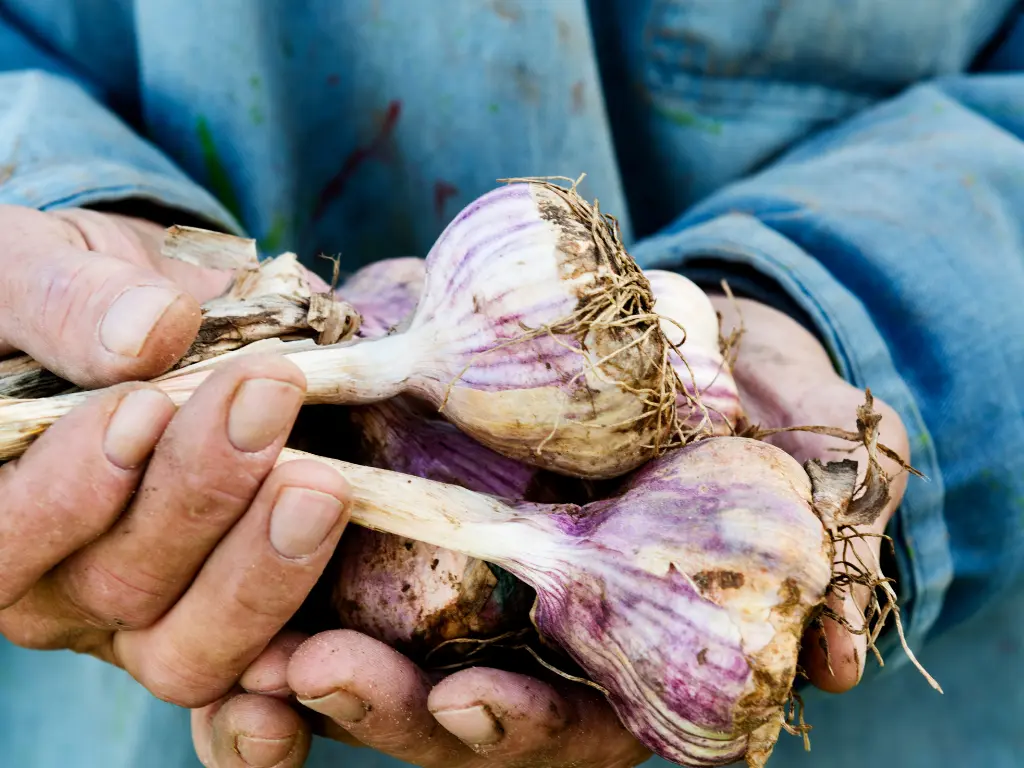
Garlic planted in fall is usually ready to harvest in mid-to-late summer, about 8-9 months after planting. The garlic bulbs will be fully matured when the lower leaves of the plant start to yellow and die back. If you wait too long, the bulbs may begin to split, so be sure to harvest at the right time.
How to Harvest Garlic
-
Loosen the Soil: Use a shovel or garden fork to carefully lift the garlic bulbs out of the ground. Be gentle to avoid damaging the bulbs.
-
Cure the Garlic: After harvesting, lay the garlic bulbs out to dry in a cool, dry place. Curing is important because it allows the garlic to develop full flavor and helps it store for longer.
Frequently Asked Questions
-
What type of garlic should I plant for fall?
-
Hardneck garlic is great for colder climates, while softneck garlic is better suited for milder winter regions.
-
-
Can I plant garlic in warm climates?
-
Yes, you can plant garlic in warmer climates, but make sure to choose softneck garlic varieties and plant them in late fall.
-
-
Do I need to fertilize garlic before planting?
-
While garlic doesn’t require heavy fertilization, adding compost to the soil before planting will give it the nutrients it needs to grow strong and healthy.
-
-
How deep should I plant garlic cloves?
-
Plant garlic cloves about 2 inches deep, with the pointed side facing up.
-
Conclusion
Planting garlic in the fall is a simple yet rewarding gardening task that can lead to a delicious harvest. By following these tips, choosing the right variety, planting at the correct time, and caring for your garlic during the winter months, you’ll be on your way to growing your own garlic crop in no time.
So, grab your garlic bulbs, prepare your garden, and start planting for a bountiful harvest next year. Happy gardening!

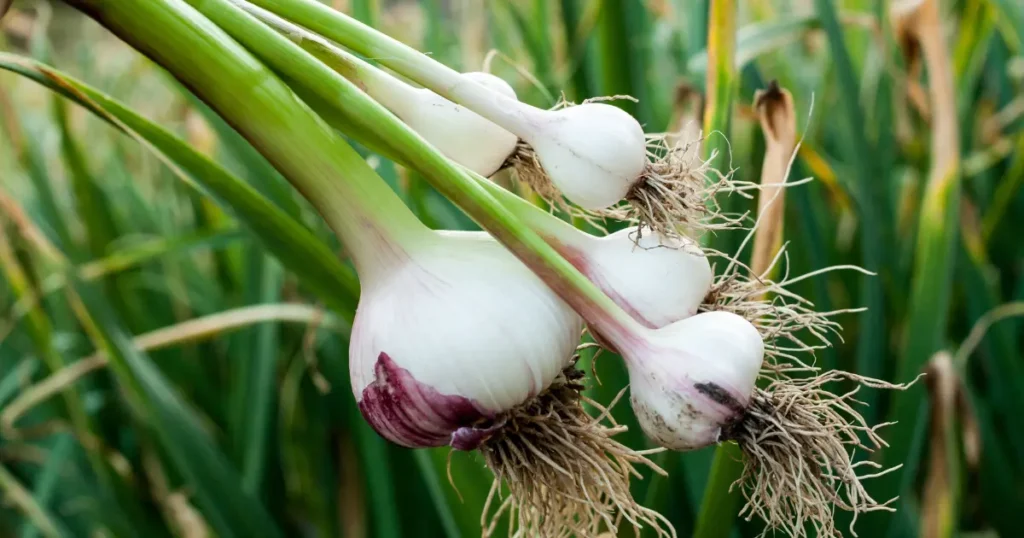
Swedish Ivy Care: How to Grow a Healthy, Thriving Plant
Have you ever looked at your Swedish Ivy and wondered why the leaves are turning [...]
Nov
Avoid These 10 Garlic Planting Mistakes for Bigger, Healthier Bulbs
Growing garlic at home is one of the most satisfying things a gardener can do [...]
Nov
How to Prevent Christmas Cactus Bud Drop: Tips for a Healthy Bloom
Have you ever noticed your beautiful Christmas cactus (Schlumbergera) starting to lose its buds just [...]
Nov
Discover 7 Stunning Types of Night-Blooming Cereus
Have you ever waited for a flower that only opens at night and then disappears [...]
Nov
How to Propagate Comfrey from Root Cuttings: Easy Guide for Beginners
If you’re looking to grow your own healthy comfrey plants without spending too much, propagating [...]
Nov
10 Best Christmas Plants to Gift This Holiday Season
The holiday season is finally upon us, and if you’re searching for the perfect gift [...]
Oct